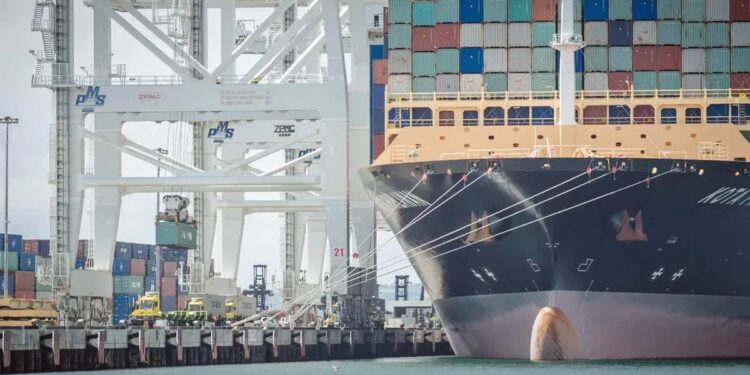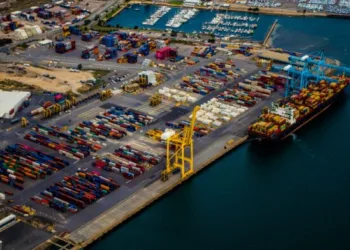Major liner operators are pulling levers in an effort to manage capacity as economic uncertainty in the world’s biggest market undercuts demand on the benchmark eastbound trans-Pacific trade lane.
The Freightos Baltic Index saw Asia-U.S. West Coast rates climb 48% in the latest week to $2,958 per forty foot equivalent unit, mostly on general rate increases (GRIs) that took effect Nov. 1.
But in the peculiar yes-no world of seafreight pricing, current daily rates are trending down slightly while rates to the East Coast remained about even with October levels, said Freightos analyst Judah Levine in a note to clients.
“There are reports indicating prices could fall back to their late October levels soon, which were themselves pushed up from year lows hit in early October via GRIs,” Levine wrote, noting that some carriers announced additional blanked sailings this month, “to keep rates from backsliding to recent lows.”
All this comes as the busiest U.S. container gateways are on track to top last year’s record volumes, despite some recent weakness.
But in addition to the low demand challenge, carriers are also contending with continued fleet growth and climbing overcapacity. The billions in windfall profits from Red Sea diversions in 2024 that boosted rates above long-term levels are a fading memory.
“The monthly global rate benchmark has been lower year-on-year since March even as volumes have grown overall in 2025,” Levine said. Reports of carriers considering a return to the Suez Canal as Yemen’s Houthi militia end regional attacks on shipping – for now – will likely exacerbate the capacity surplus.
“The current low demand period poses a challenge to carrier GRI ambitions,” said Levine.
The National Retail Federation said U.S. ocean imports in October retreated close to the previous lows for the year in May and June when U.S. tariffs on Chinese goods soared to 145%. Further double-digit year-on-year declines are forecast in November and December in the literal wake of tariff-fueled frontloading since mid-August.
“U.S. ocean imports are expected to rebound during the lead up to Lunar New Year in January and early February,” Levine said, “but these months are also projected to be down significantly year-on-year due to comparisons with Q1 2025 when frontloading began.”
On Asia-Europe routes, rates climbed 9% to about $2,500 per FEU this past week with November GRIs pushing prices to the Mediterranean up 24% to $2,837 per FEU. “Some carriers have announced mid-month GRIs aiming to increase rates to the $3,000 per FEU mark for Asia-Europe as the long-term contract tendering season gets underway for this lane,” said Levine.
Find more articles by Stuart Chirls here.
Related coverage:
Container imports off 17.6% at leading US port
Freightos brand adopts Visa/Transcard payment financing tool
US suspends port fees on Chinese ships
Suez Canal, ocean lines discuss return of global shipping
The post Ocean rates tested by capacity conundrum appeared first on FreightWaves.


















